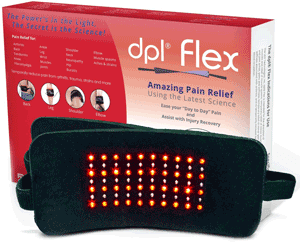
Do you have trouble getting to sleep at night? Not getting enough sleep can impact your mental and physical health.
If you suffer from insomnia, you may have already tried medication, exercise, and meditation to remedy the problem. Unfortunately, they may not have worked for you. Many environmental and behavioral factors can go into giving you insomnia, but there are tools to help you manage it.
Light therapy is the use of a specialized light that can regulate your circadian rhythm and help you get to sleep at night.
Let’s explore light therapy as a treatment option for insomnia.
Table of Contents
What Is Light Therapy?
Light from the sun affects our day-to-day physical, mental, and behavioral changes. Exposing yourself to the sun during the day keeps you alert, while being exposed to darkness at night prepares your mind and body for sleep.
Light therapy requires you to sit near a specialized bright light that mimics natural light from the sun. Doing this will regulate your circadian rhythm, making you more alert during the day and better able to sleep at night.
According to research, light therapy with this Northern Light Bright Light Lamp for SAD can reactivate your sleep-wakeup cycle by preventing insomnia and increasing energy levels where appropriate. This and similar devices expose you to visible light without using too many harmful ultraviolet rays. The devices can also help with seasonal depression and stress management.
Types of Light Therapy
There are a few different kinds of therapy that can help you get to sleep and stay asleep. You can use different types throughout the day to reap their benefits.
Being exposed to blue wavelength light sends signals to your brain that keep it alert, which is fine during the day when you want your brain to be alert. But cutting out blue light before bedtime is essential for getting to sleep.
Additionally, being exposed to ultraviolet light during the day will have a similar effect and regulate the daytime part of your sleep-wakeup cycle.
Conversely, exposing yourself to red light at night prepares your mind for sleep by aiding in melatonin production. In a way, it “tricks” your brain into preparing for sleep.
How It Improves Sleep
Our circadian rhythm regulates our sleep-wakeup cycle, which keeps us awake during the day and makes us tired at night. The cycle lasts about 24 hours, so if you can’t get to sleep at night or aren’t exposed to enough sunlight during the day, your whole cycle can be disturbed.
Light therapy can help your body recognize when it’s time to be alert and when it’s time to rest. From there, it’s your responsibility to try to get your sleep schedule back on track.
Getting a Better Night’s Sleep
A good night’s sleep could be within reach if you give light therapy a try! It might be exactly what you need to correct your circadian rhythm and get your sleep schedule back on track!
Be sure to check out our array of light therapy devices and best SAD lamps to help regulate your circadian rhythm!


